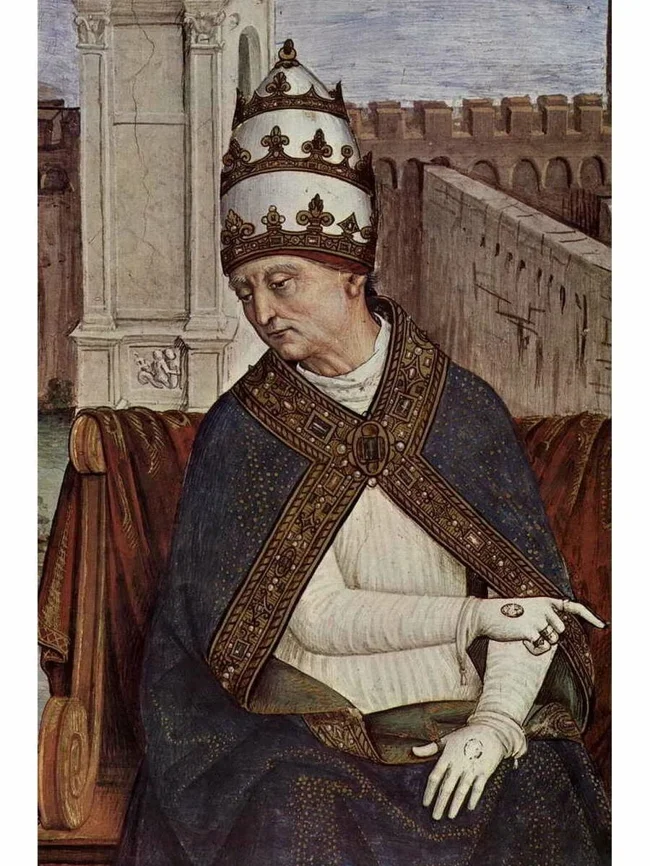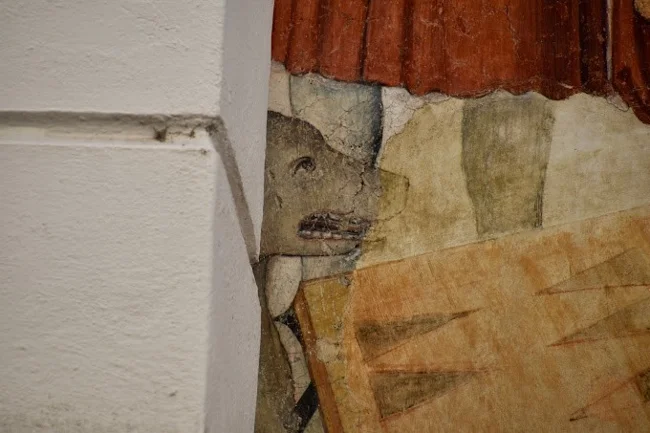Amazing medieval street art that has survived to this day (9 photos)
It must be said that the work is not without humor and can be interpreted in an interesting way in modern realities. 
In the 15th century, Enea Silvio Bartolomeo Piccolomini, later better known as Pope Pius II, described all the beautiful houses of Vienna as painted inside and outside with fairy-tale landscapes. 
Pope Pius II
Like the marginalia found in manuscripts, religious and historical sketches, as well as humorous images, were to be depicted on the houses. 

Как садят рис
Смотреть видеоAn example of medieval marginalia
These medieval frescoes have unfortunately mostly been destroyed by time, but one of them, a humorous one, can be seen today on one of the houses in the historical center of Vienna. On the facade of the Hasenaus (Hare House) house, a cunning wolf and a dignified cow in glasses are depicted. The animals are busy playing backgammon. Behind the board, the legs of a man are visible, who is probably holding a fly swatter in his hands, perhaps to keep an eye on the players to prevent cheating.

One explanation for this absurd scene is that it is an allegory for the political tensions between Protestants and Catholics. It is unclear who is winning. Others suggest that a furrier is behind the game, eagerly awaiting the end so he can take the loser's skin.

The fresco dates back to around 1509. The house was originally intended to be entirely decorated with scenes from medieval life, including one large motif of a rabbit hunt (hence the name). But when it was rebuilt in the 18th century, everything except the backgammon game was unfortunately lost. Fortunately, this amusing fresco was preserved, so Viennese and visitors to the city can admire it, continuing to ponder its mysterious meaning centuries later.





